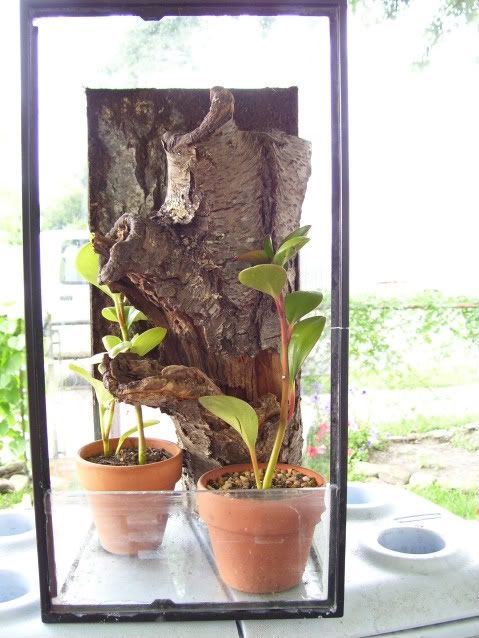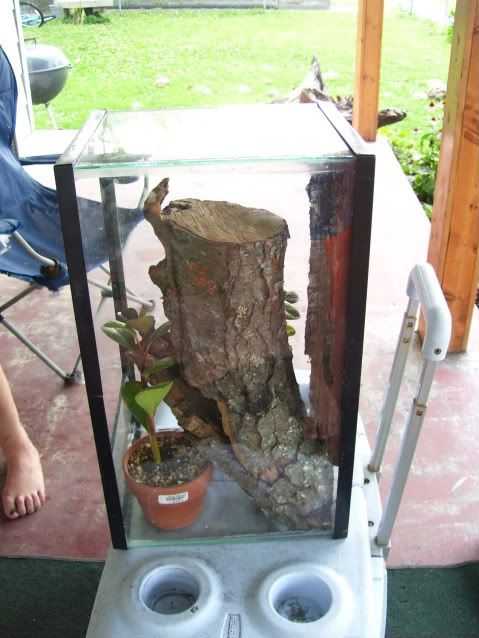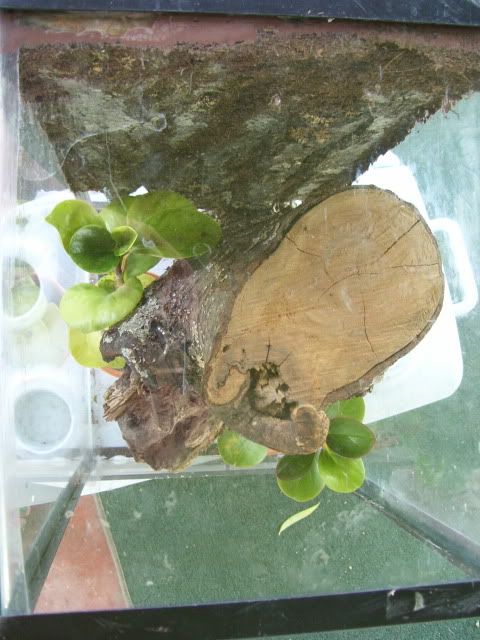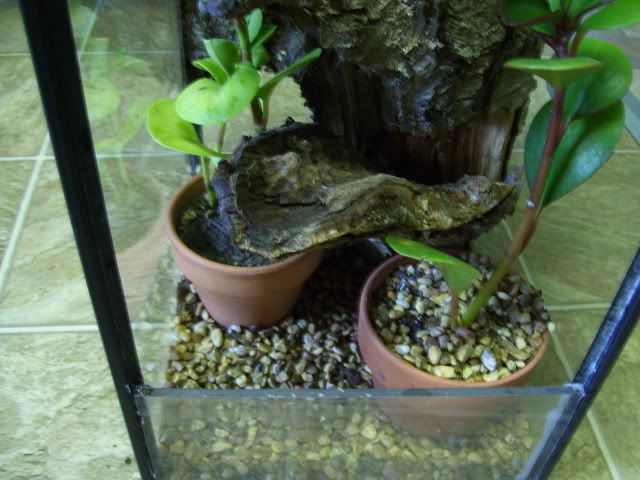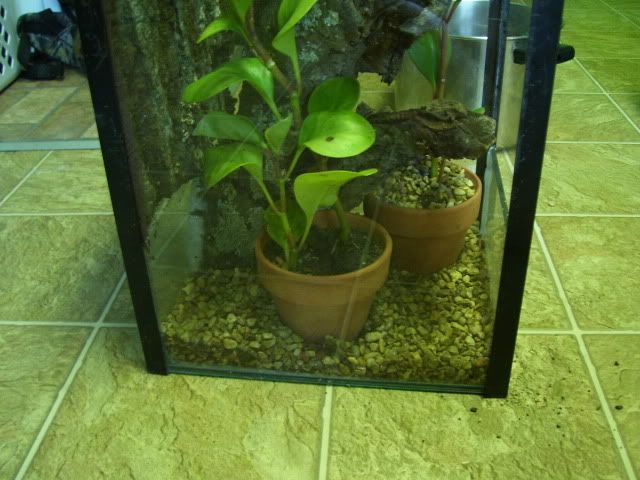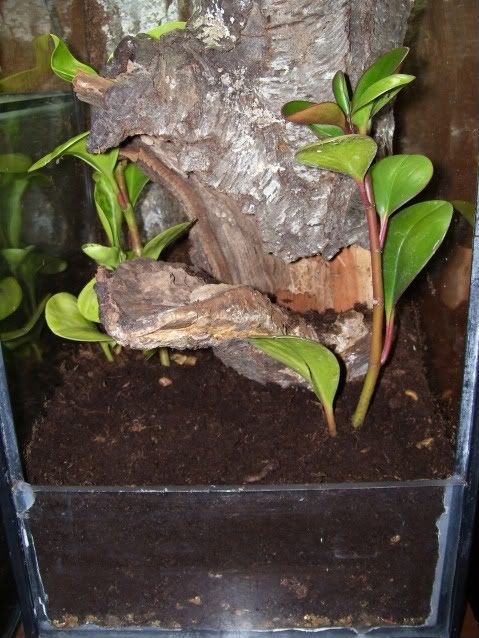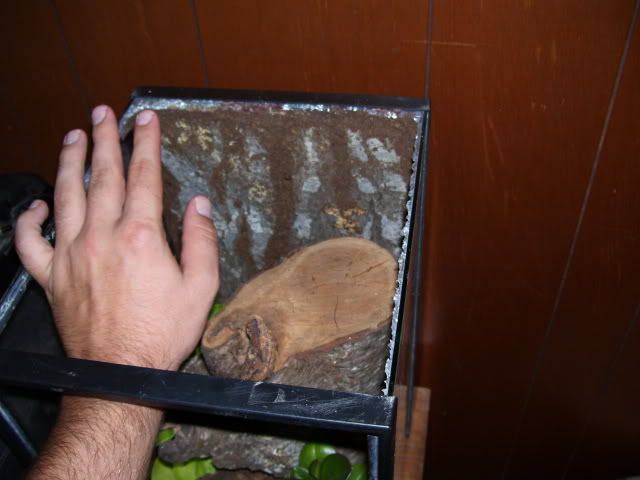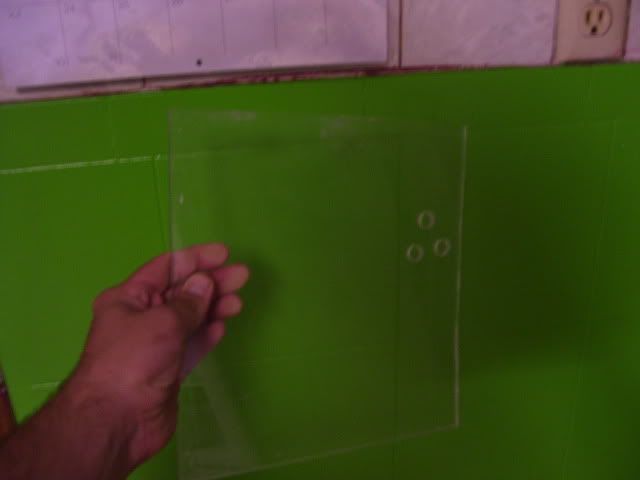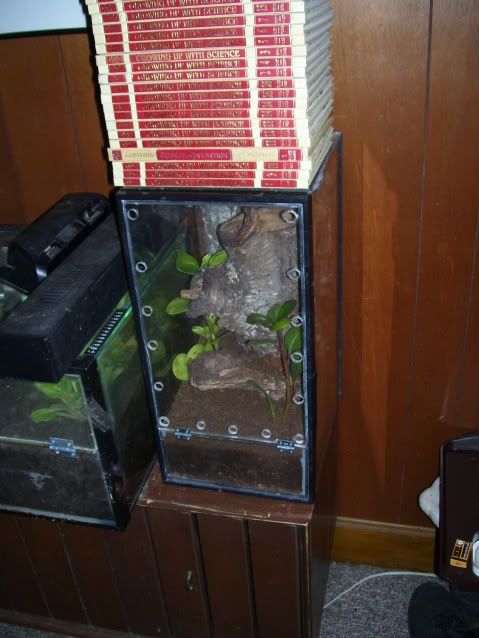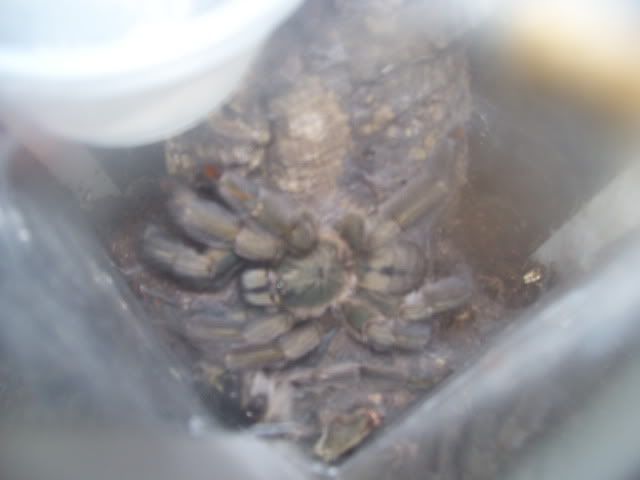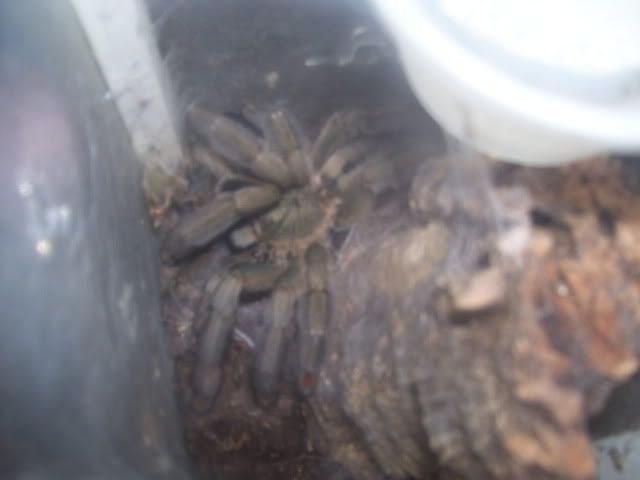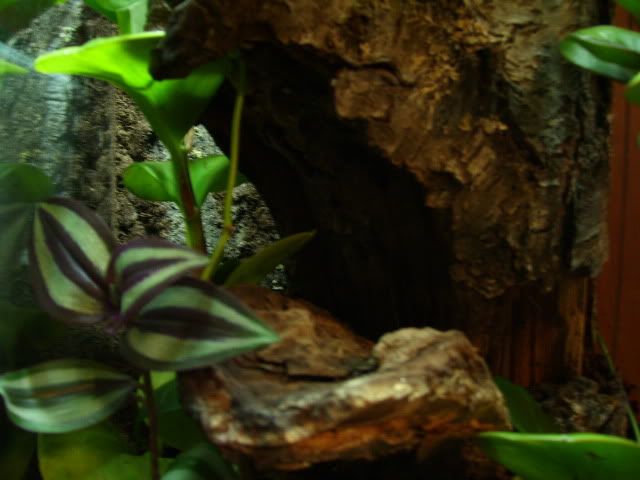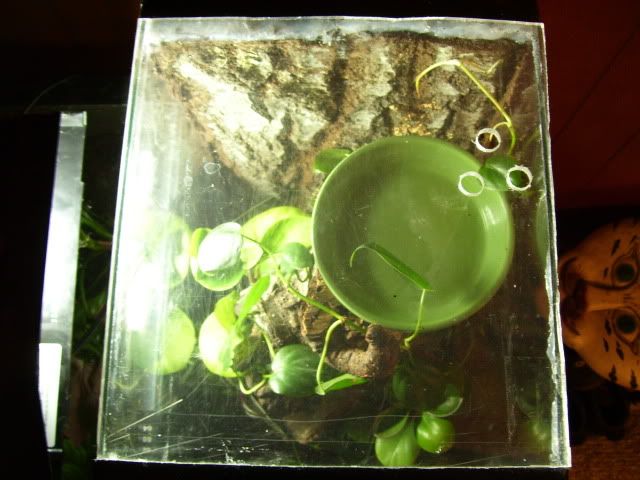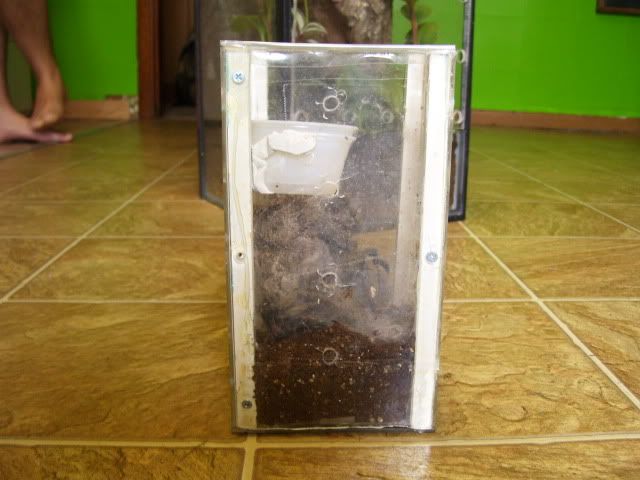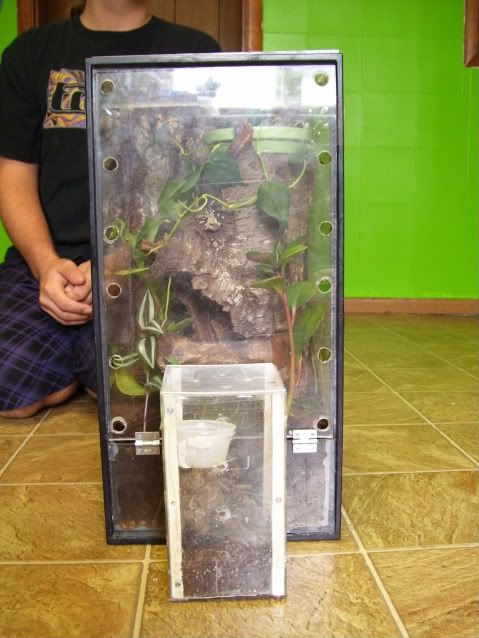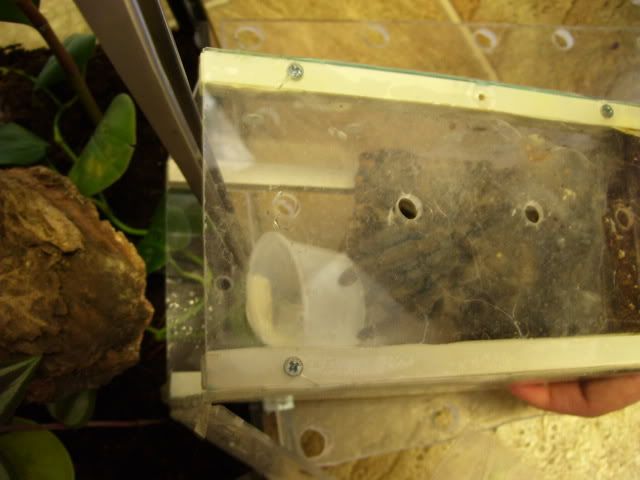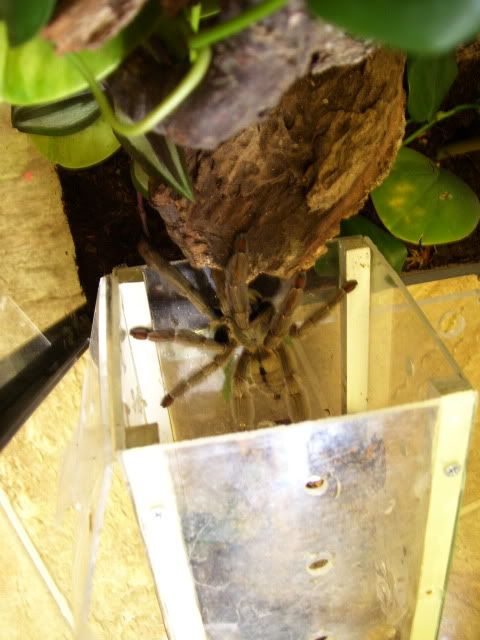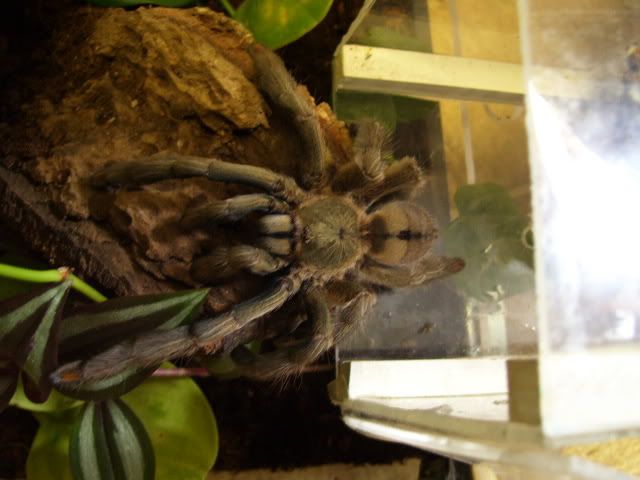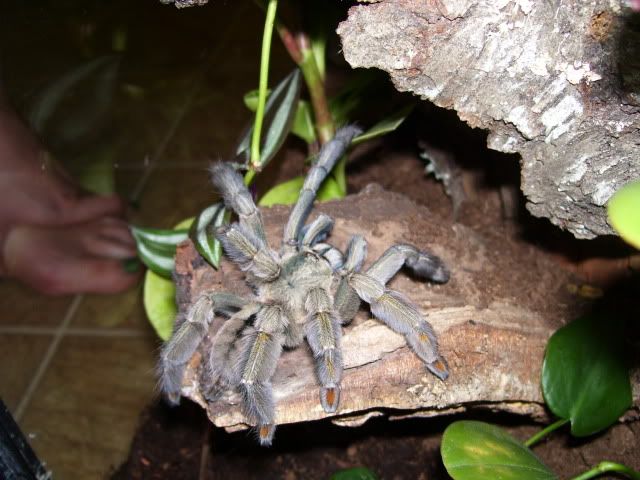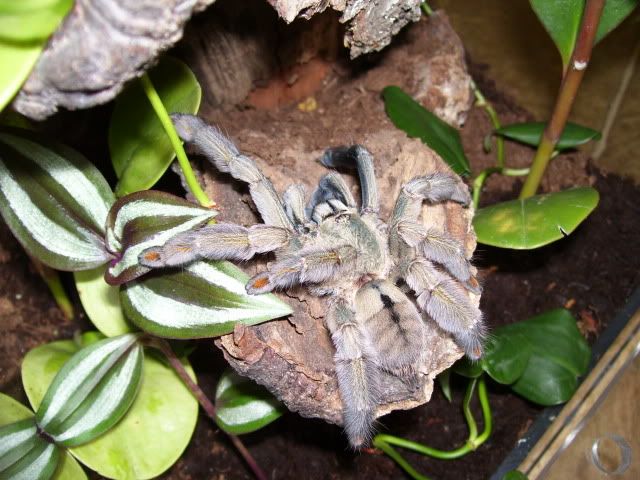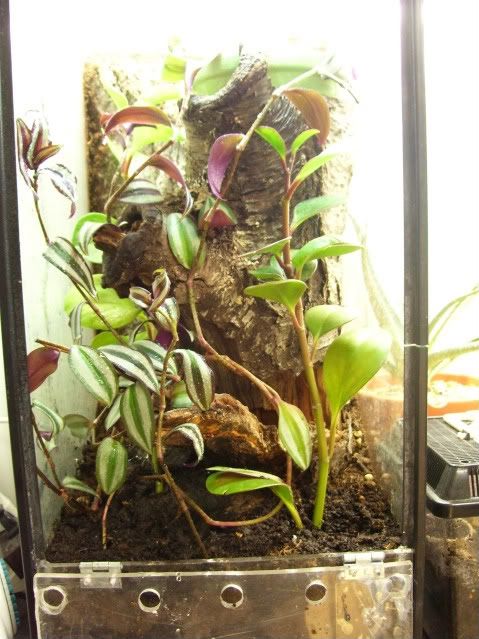- Joined
- Dec 11, 2008
- Messages
- 1,661
So, it is time to upgrade enclosures on our P. cambridgeii juvie. We have had her since late Nov. 2008(bought from paul@petcenterusa  ), due to her extremely fast growth rate and speediness, we have decided to put her in her permanent adult enclosure now. Though it is a little big for her now, we figure in a couple of molts it will be perfect, and that way we won't have to rehouse her again in a few months.
), due to her extremely fast growth rate and speediness, we have decided to put her in her permanent adult enclosure now. Though it is a little big for her now, we figure in a couple of molts it will be perfect, and that way we won't have to rehouse her again in a few months.
We have taken a 10 gallon fish tank and put a bark background on it. All bark and wood is collected from our own property, is free of pesticides and sufficiently sterilized. It is actually two pieces of bark that to our eyes look like they are from the same tree, but we tried to make it look like one continuous piece. We used a full tube of the dark brown caulk from Home Depot to secure it with. All cracks in the bark were then sealed from the front and covered with peat moss.

We have taken a 10 gallon fish tank and put a bark background on it. All bark and wood is collected from our own property, is free of pesticides and sufficiently sterilized. It is actually two pieces of bark that to our eyes look like they are from the same tree, but we tried to make it look like one continuous piece. We used a full tube of the dark brown caulk from Home Depot to secure it with. All cracks in the bark were then sealed from the front and covered with peat moss.


